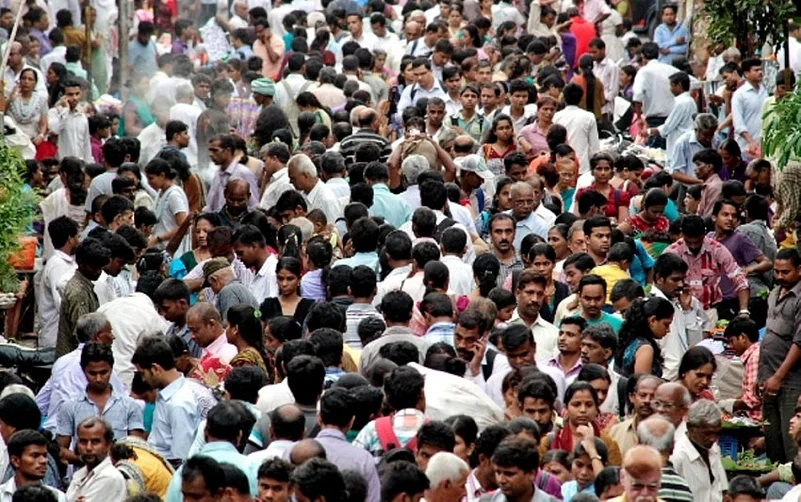The world is reaching a population of 8 billion today and peaking at 10.4 billion in the 2080s. The rate of population will continue to grow, but the speed of growth is slowing down. It took 12 years for the demographic to increase from 7 to 8 billion, but the rise from 8 to 9 billion will take 14.5 years till 2037.
The increase in the population is due to improved healthcare, reduced global poverty, improvement in maternal and child health and an increase in the longevity of life.
The thrust on improving the quality of life needs to continue to sustain the progress. Shombi Sharp, United Nations Resident Coordinator in India, says, “Today marks a historic moment for all of humanity. A world of 8 billion minds represents infinite possibilities for change. We must focus on investing in each person to achieve a quality of life that allows them to thrive equally and with dignity in our modern world, building inclusive societies and sustainable economies in the face of overlapping crises.” He adds, “India, coupling efforts to drive gender equality with the greatest youth generation in history, supported by world-class innovation in digital public goods, is positioned to help the world achieve the Sustainable Development Goals (SDGs) more than any other.”
The United Nations sexual and reproductive health agency, UNFPA, is celebrating the ‘Day of 8’ by urging a world of eight billion to harness the accompanying opportunities. Andrea Wojnar, UNFPA Representative in India and Country Director Bhutan says, “The reproductive health and rights of women and girls are key to ensuring societies thrive amid demographic changes. When we’re talking about population trends, we’re not just talking about census data or surveys – we’re talking about a woman’s right to make choices about her body and her future. The reproductive rights and health of women must be protected irrespective of demographic trends.”
Wojnar adds, “Issues like climate change and access to health care disproportionately impact the most vulnerable, especially women and girls. This day should incite the global community to commit to cultivating a world in which all 8 billion of us can thrive equally.”
On this day, India’s population is estimated at 1,414.8 million, which is 17.7 per cent of the world’s population. India is projected to overtake China, which will peak this year itself before declining in 2023, to become the most populous country.
The good news is that India’s population growth appears to be stabilising, notes UNFPA. India’s Total Fertility Rate (TFR) has declined from 2.2 to 2.0 at the national level. The country reached national replacement level of fertility in 2020, but this replacement level is not even across all of India. While 31 States and Union Territories with 69.7% of the country’s population have reached below the replacement rate of 2.1, TFR is above national average in states like Bihar, Meghalaya, Manipur, Uttar Pradesh, Jharkhand and Madhya Pradesh. India’s National Programme for Family Planning was launched way back in 1952 and the National Population Policy in 2000. UNFPA concludes, “This indicates significant improvements in access to family planning related information and services. In summary, it shows that India’s national population policies and health systems are working.” The main reasons for decline in fertility include increase in adoption of modern family planning methods and a reduction in unmet need for family planning.
The ‘Day of 8’ also spotlights the complex linkage between population growth, poverty, climate change and the achievement of the SDGs. While population growth makes eradicating poverty, combating hunger and malnutrition and increasing the coverage of health and education systems challenging, achieving the SDGs, especially those related to health, education and gender equality, will contribute to slowing global population growth, notes UNFPA. Slower population growth can also help mitigate environmental degradation.
Experts are of the opinion that demographic increase or decrease is not particularly good or bad in entirety, but it is demographic resilience that determines the nature of sustainable development. Building demographic resilience entails foreseeing and preparing for demographic changes and challenges in advance. Demographic resilience can be achieved by timely policy making by governments with demographic change projection as a foundational principle. Demographic resilience seeks to equip people with skills, tools and opportunities they need to thrive. Population growth creates space for economic growth and investment opportunity in education and health, reduced fertility rate leads to lesser dependent population and more heads in the working age bracket.
The way forward is to pursue SDGs with a human rights approach with special emphasis on women and girls by making sure the availability of information regarding sexual and reproductive health and rights and facilities like contraceptives and maternal healthcare.
Poonam Muttreja, Executive Director, Population Foundation of India, says, “Going forward, our focus should be on providing women of all communities access to family planning services, comprehensive sexuality education to adolescents, and changing regressive social norms that compromise the reproductive autonomy of women.”
Sonalde Desai, centre director at NCAER-National Data Innovation Centre, couldn’t agree more. She says, “Young women, particularly those who have yet to begin childbearing, need the flexibility to participate in the workforce and develop experience that will allow them to control their lives. Provision of reproductive health services for these young women is urgently needed. Now is the time to focus on needs of these young women.”
Focus on women opens up infinite possibilities in development. If you flip the number 8 on its side, UNFPA points out, it is the symbol for infinity (∞) and the “power to shape our common futures”.


























